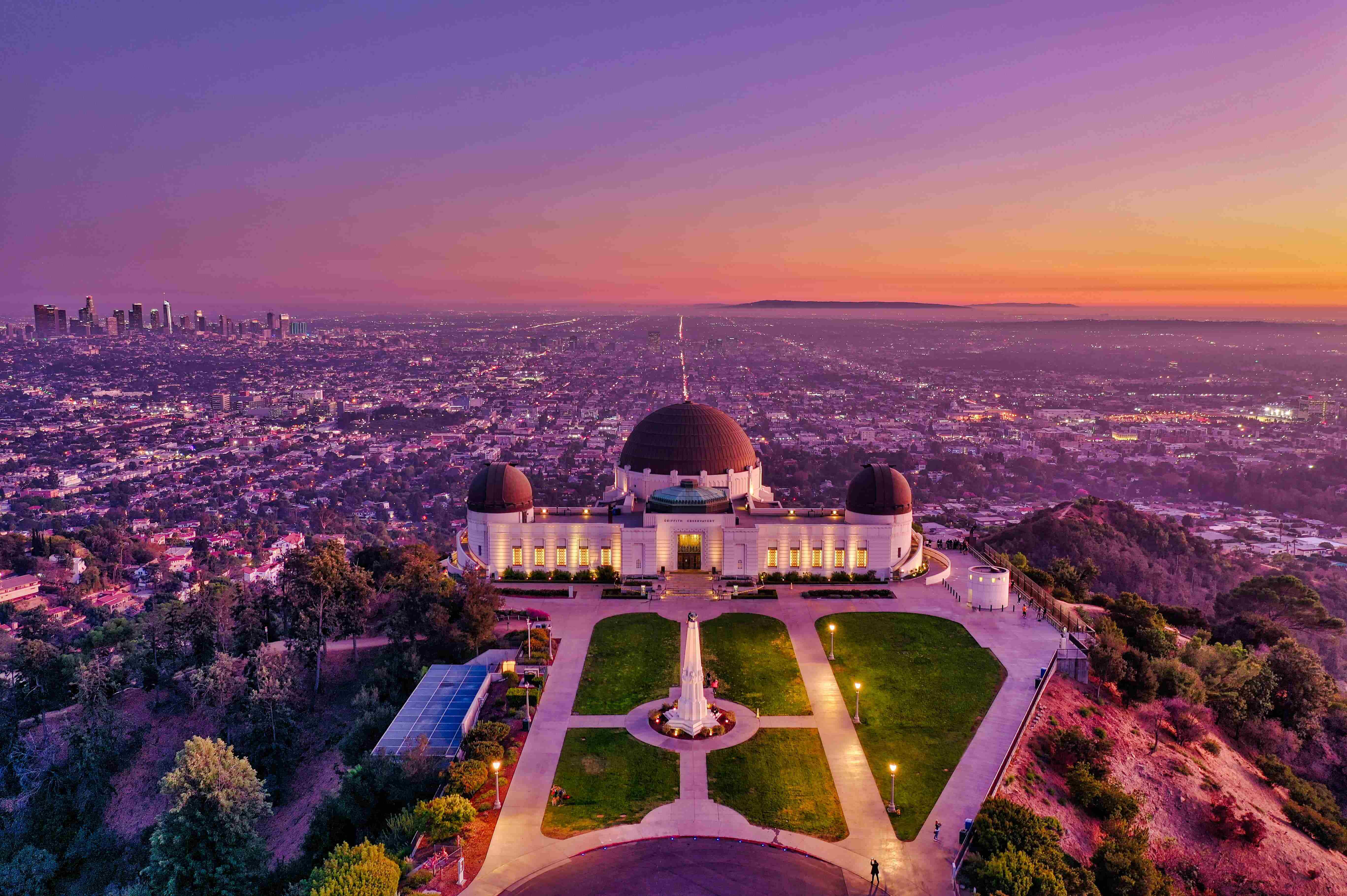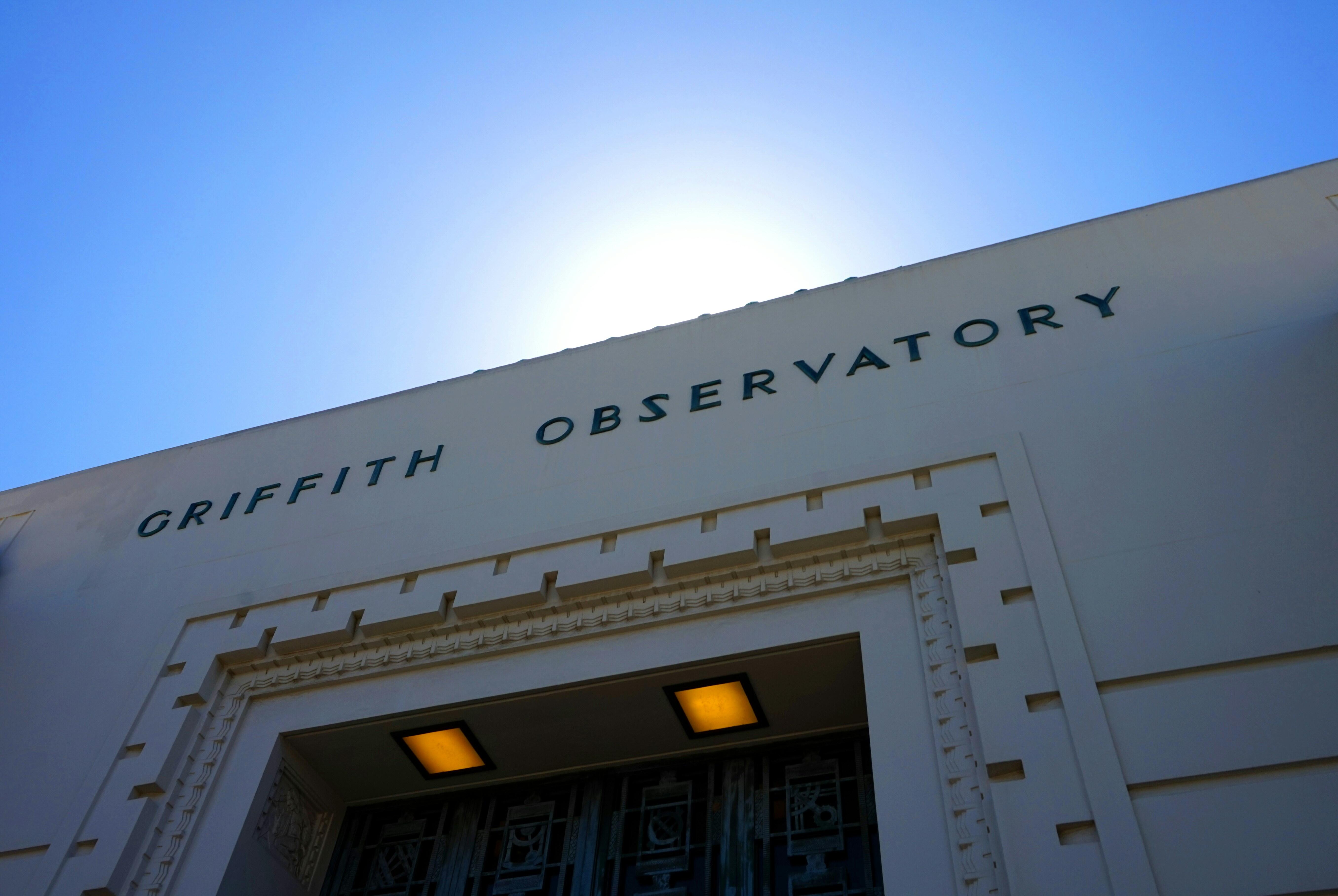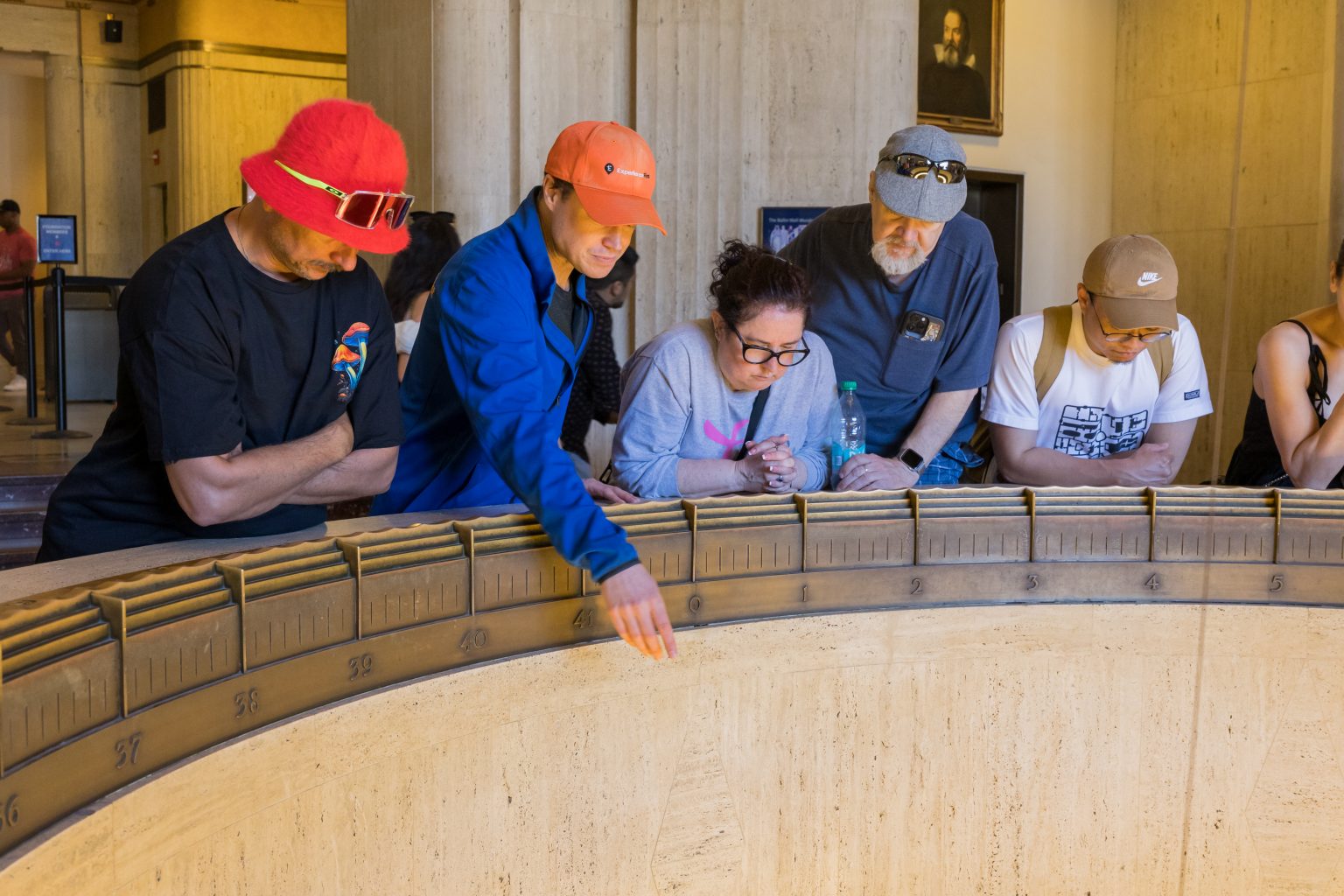
Your Griffith Observatory Planetarium Show Guide, According to a Live Narrator
As I said, it really is better than IMAX, especially since the renovation.
The seats still recline, but they’re padded and much more comfortable than the early days. No longer arranged in a circle, they now create a horseshoe shape mainly facing one side of the dome.
And the visuals are amazing.
There are two main systems of projection that display the show on the 60-foot ceiling. The first is the very impressive Zeiss Mark IV star projector — a multimillion dollar piece of equipment that displays a stunningly accurate depiction of the night sky, which can be calibrated to show what the sky looked like on any night in history and from any point on earth.
The second is the Digistar 7 digital projection system displaying 8k resolution images at 60 frames per second. This transports visitors to other worlds through carefully rendered moving images of other planets and moons in our solar system and beyond.
Should you see a show at the Griffith Observatory?

The short answer is yes, absolutely.
The shows are entertaining and educational and sometimes even emotional. We’re talking about the universe here, so no matter who you are, where you are from, or how old you are, the subject is relevant to you — and in ways you may not realize if you don’t see a show. But more on that later.
What the Griffith Observatory planetarium shows are like

In a word, they’re thrilling! But here’s what the show experience is like, from start to finish, so you know what to expect.
After lining up outside on the west terrace (unless it’s raining), you will be led inside the Samuel Oschin Planetarium. When you first enter, you immediately know you will be taken on a memorable journey. The projected still image on the dome and the reshow music set the mood just right.
When you find your seat, you may be a bit surprised at how far you’re leaning back. Your gaze will immediately focus on the giant dome screen above you. A brief announcement will ask you to turn off all your electronic devices.
Pro tip: This is advice you want to take because the planetarium gets very dark, and if you phone or watch lights up everyone will see it, including the ushers who will come over and ask you to turn it off.
After the lights dim, myself or one of the other performers will arrive in the center of the room with a glowing ball of light to get your attention. After a brief introduction the light goes out, the narrator disappears to the back of the room, and the “movie” on the dome starts to play. The surround sound along with the large screen create an experience so immersive that kids (and some adults) often ask if the floor moves during the show.
One of the truly unique features of the planetarium is the live narration. Visitors are often impressed by the fact that it was not a recorded voice they were listening to during the show. I find it gives a more personal experience to the show knowing the narrator is right there with you in the room.
Full list of shows at Griffith Observatory

Below are the three shows that play throughout each day in the planetarium. These showtimes are constant and do not change.
Signs of Life
This show asks the question: could there be life on other worlds, and if so, how do we find it? Packed with a ton of information and a whirlwind journey through several worlds in our solar system as well as a few of the more than 5,500 (and counting) planets we’ve discovered outside of our solar system, this show could almost be described as a ride.
Showtimes:
- Tuesday-Friday afternoons at 1:45, 4;15, 6:15, and 8:45
- Saturday and Sunday at 11:45 a.m., 2:15 p.m., 4:15 p.m., 6:45 p.m., and 8:45 pm.
Centered in the Universe
Taking a poetic look at the history of human beings trying to figure out what it is we’re actually seeing gin the night sky, this show takes us from the world of Claudius Ptolemy through the discoveries of Galileo Galilei and Edwin Hubble, up to the more modern discovers of dark matter and dark energy.
While the universe is unimaginably large, “Centered in the Universe” reminds us that we have a special place within it, and that we are all made of stardust.
Showtimes:
- Tuesday-Friday afternoons at 2:45, 5:15, and 7:45
- Saturday and Sunday at 12:45 p.m., 3:15 p.m., 5:15 p.m., and 7:45 p.m.
Water Is Life
Geared toward kids but enjoyable and informative for all ages, this show focuses on water and its importance to life on earth. It also takes you on a journey to some of the other watery worlds we’ve discovered in our solar system.
Showtimes:
- Tuesday-Friday at 12:45 p.m.
- Saturday and Sunday at 10:45 a.m.
FAQs about Griffith Observatory planetarium shows

Still have questions about the show? Check out our frequently asked questions below.
How long is the planetarium show at Griffith Observatory?
Griffith Observatory planetarium shows are about half an hour. To be more precise, “Signs of Life” is 34 minutes while “Centered in the Universe” is 32 minutes, and “Water Is Life” is the shortest at 28 minutes.
Is the Griffith Observatory show worth it?
Absolutely. They are state-of-the-art and produced in-house at the observatory. You can’t find shows like these anywhere else in the world. Seeing a show at the Griffith Observatory is a must for your visit to LA.
Which is the best show at the Griffith Observatory?
My favorite is “Centered in the Universe.” It’s just so beautifully written and wonderfully conveys how we humans are a part of the universe in such a profound way.
Are Griffith Observatory shows free?
Unfortunately, no. Entrance to the observatory is free, but the shows are $10 for adults, $8 for children, students, military and seniors. Kids under 5 years old are free but they are only allowed in the Water Is Life show.
If you want to see a show after your tour — and we highly recommend this — your tour guide can help you purchase tickets on-site.
LA’s best show

The planetarium shows at Griffith Observatory are not to be missed. But there are a lot of other things that you also don’t want to miss when you visit the observatory, like a piece of moon rock on loan from NASA displayed in the new wing downstairs or a demonstration of the Tesla Coil generating half a million volts of electricity.
Make sure you see it all by booking our Griffith Observatory Guided Tour and leave no stone — or meteorite — unturned when you visit one of LA’s most iconic landmarks.